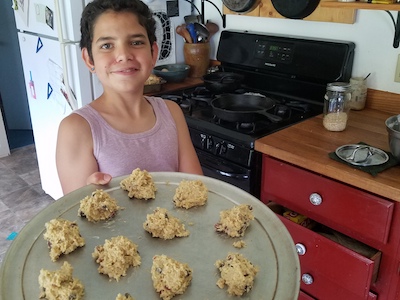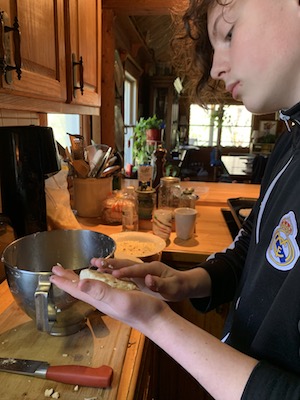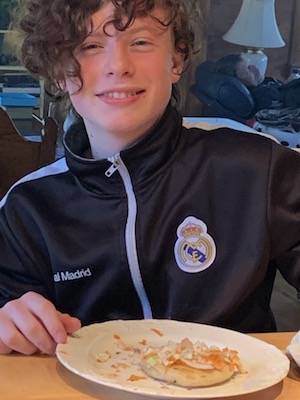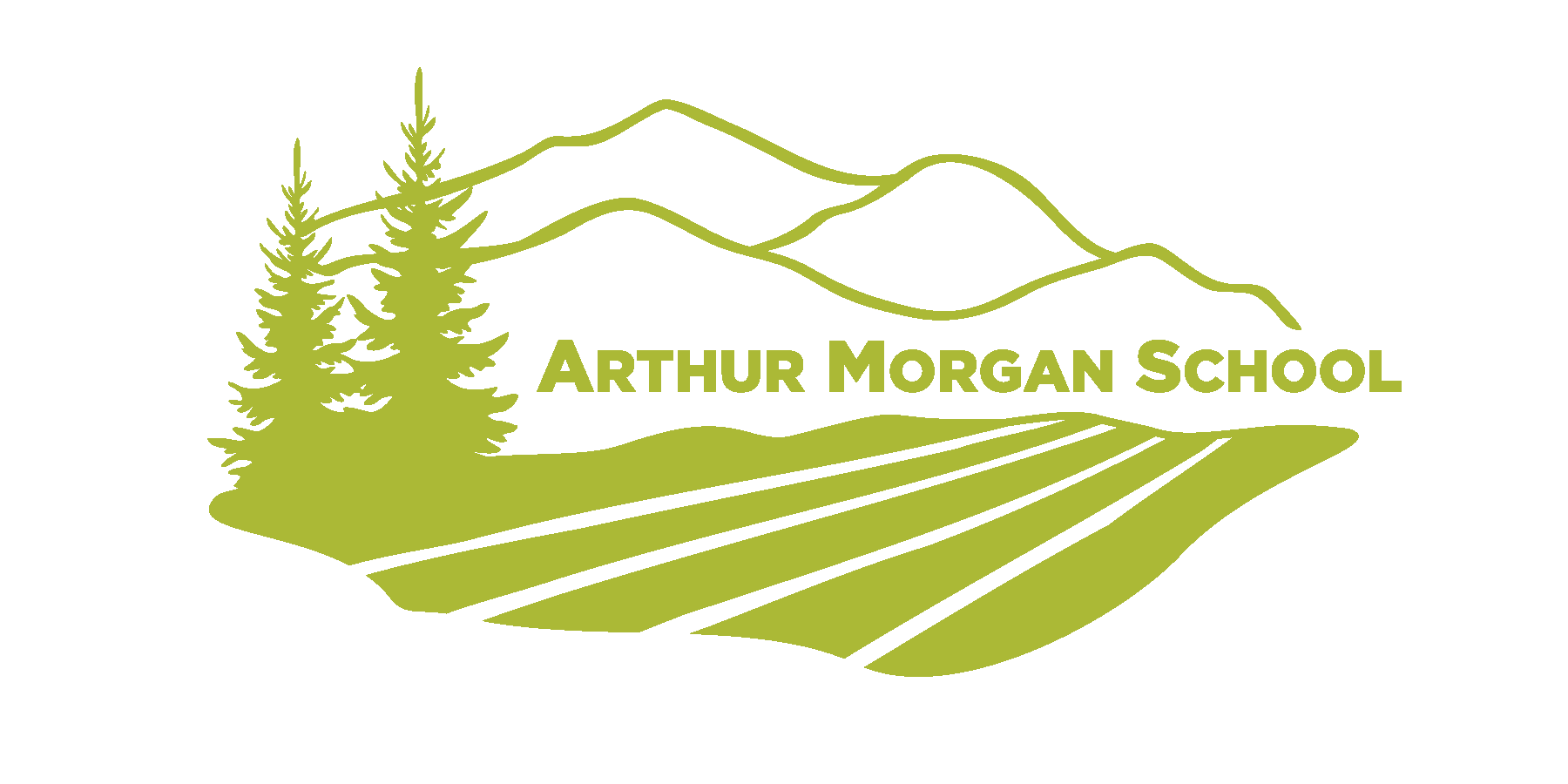Hands On Science Experiment In Your Own Kitchen

One of the biggest challenges for remote education is keeping lessons interactive. While stuck at home, students don’t have access to the same tools and materials they do at school. Everyone appreciates how Zoom and Google Classrooms are allowing us to continue teaching. Yet, even with these technologies it can be challenging not to reduce your lesson plans to basic reading and testing models.
One teacher at Arthur Morgan School has found a way to keep her science classes hands-on by using materials that are easily found in everyone’s kitchen. Kavita Hardy is AMS’s Farm Coordinator and a science teacher. This semester, she planned to teach a botany course about different grains to her students. True to AMS’s use of Montessori’s adolescent internship model, they planned to cook meals for the school while learning about the different plants that make up our grains. Then COVID-19 hit and AMS moved to remote learning. With a little adjustment, Hardy was able to keep teaching her class. She was also able to keep it interactive in a true AMS way. The students just replaced cooking for the school with cooking for their families.
What Makes Grains Tick?
Corn, wheat, and rice are typical staples used in most people’s daily meals. Whether making a sandwich, cooking up some tacos or even challenging yourself with a risotto, grains make up a steady part of our diet. We don’t often think about the plants that provide us with these foods though. Each plant is very unique and fascinating when you really examine them. In Hardy’s Grains Class, the students do just that. They take an in-depth look at each grain and how it grows. They learn about the different varieties of the plants that supply these grains and gain an deeper understanding of what happens to those plants when we cook them.
 Each week, the class focuses on one specific grain. In their own kitchens, students prepare recipes supplied by Hardy. They might make cornbread and quinoa cookies. Hardy tries to pick recipes that students can make using items they already have at home or can find easily at their local supermarket. However, if they have trouble locating an item, Hardy will send the ingredient to them. Lessons are supplied a week in advance so that students can communicate what they need and can be fully prepared for each class.
Each week, the class focuses on one specific grain. In their own kitchens, students prepare recipes supplied by Hardy. They might make cornbread and quinoa cookies. Hardy tries to pick recipes that students can make using items they already have at home or can find easily at their local supermarket. However, if they have trouble locating an item, Hardy will send the ingredient to them. Lessons are supplied a week in advance so that students can communicate what they need and can be fully prepared for each class.
Elaborate Recipes Make for Better Science
The cooking processes can be elaborate. Hardy’s recipe for a pot of white rice is over 10 steps long. However, there is purpose in using these complicated techniques. While they cook, students make observations. How did the grain break down throughout the cooking process? What specifically occurred during a certain step of the recipe? The drawn out steps allow students to see changes to their grain as they happen. Through their observations, they gain a better appreciation for the science that is occurring everyday on their stovetop.
Want to do another Hands-on Science Experiment in Your Own Kitchen? Check out AMS’s Blog, Stories from the Middle!
Learn more
Throughout the rest of the week, the students look at the grain more closely through various science labs. They learn how plant cells differ from animal cells and dissect seeds to see what’s actually inside them. They look at different varieties of each grain and form hypotheses about how their unique structures will affect the way they cook. Hardy has the students do a lot of this work independently and then helps them process what they observed through Zoom meetings. They get to relate their observations to their classmates and experience a shared moment from their separate locations.
Trying It On Their Own
At the end of each week, the students find and prepare their own recipe using the grain they studied. Sometimes they discover something new, but they may also pick a family favorite. Parents have been helping in these moments, passing down an old family secret or two that make the food taste better. The only difference now is that the students understand why rinsing rice three times makes it come out so much fluffier.
 The experience of cooking for their families while learning is a great way to activate these middle schooler’s desire to be purposeful. It also takes a bit a pressure off parents as students learn to make their own snacks and can now help out with making dinner. Families are able to celebrate their students’ accomplishments and enjoy the fact that they are learning while also doing something meaningful for their families. This is a goal we seek out regularly at AMS and are excited that we can now offer it to students at home.
The experience of cooking for their families while learning is a great way to activate these middle schooler’s desire to be purposeful. It also takes a bit a pressure off parents as students learn to make their own snacks and can now help out with making dinner. Families are able to celebrate their students’ accomplishments and enjoy the fact that they are learning while also doing something meaningful for their families. This is a goal we seek out regularly at AMS and are excited that we can now offer it to students at home.
How Does Popcorn Pop?
One simple hands-on science experiment that can be done right from your kitchen is examining why popcorn pops. Corn is a fascinating grain because its different seed structures make each variety cook differently. While some corn kernels just shrink when heated, others pop. With a little background information and some simple dissection on the kernels, your student can get a scientific understanding of how one of their favorite snacks is made. Best of all, the kernels are big enough and easy enough to dissect that you can do everything yourself without any special equipment.
Here is the experiment that you can download and run at home. It has lots of helpful information on corn and beautiful detailed illustrations that will help your student understand what is happening. We hope by offering this while we are stuck at home, you can keep your students’ science lessons hands-on and relatable to our everyday lives– just the way science is supposed to be.
-by Nicholas Maldonado
